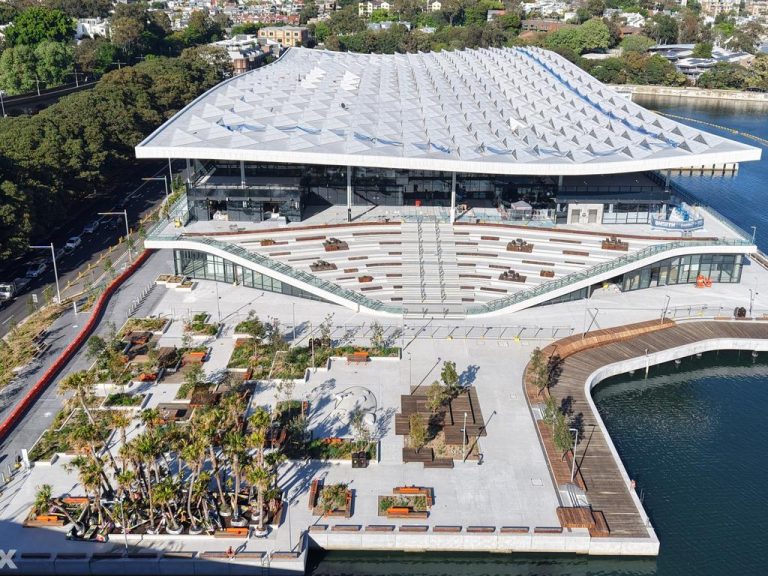Big-ticket precincts like Sydney’s Tech Central lure overseas investment giants
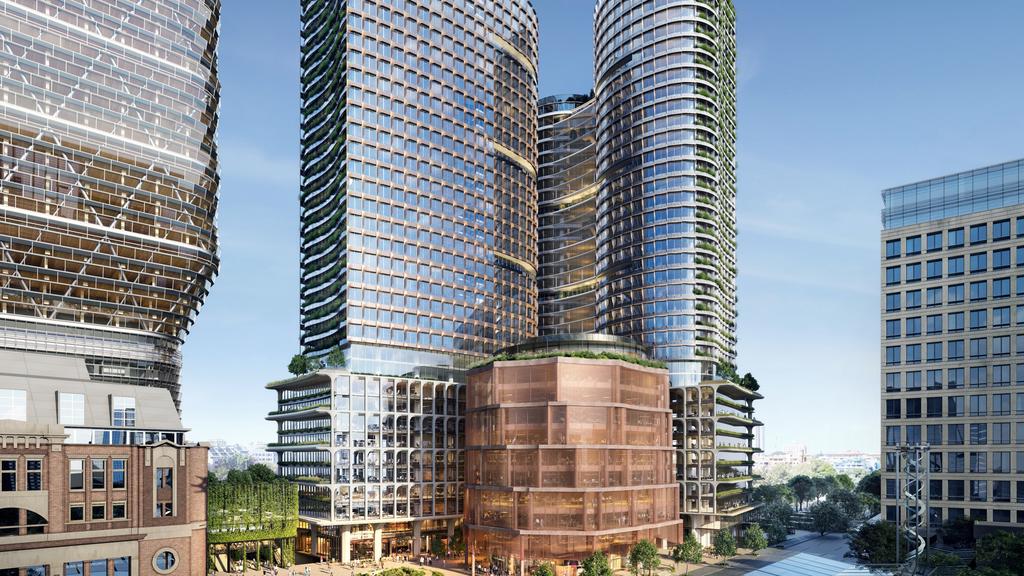
An artist’s impression of Atlassian’s new headquarters, left, and Central Place Sydney.
Top offshore investors are embracing big-ticket Australian technology precincts, with Asian sovereign funds emerging as leading contenders to take a slice of the $1.8bn Atlassian headquarters being built in Sydney.
Heavyweights on the Dexus platform – South Korea’s National Pension Service and Singapore’s GIC – have been identified as parties chasing a 35 per cent interest in the complex, which the listed group is developing.
The revolutionary timber tower is being built as the centrepiece of the Tech Central precinct at the gateway to the Central Station, which is also in line for a broader overhaul.
The whole area has been billed by the Perrottet government as a chance to bring new companies and capital into Australia, with hopes a multibillion-dollar technology-led precinct of skyscrapers to be built over the rail lines at the city’s Central Station will help stimulate growth.
The NSW government just weeks ago unveiled its dramatic scheme for a mini-suburb of skyscrapers to be built over and around the station. All up, it is proposing about 15 new buildings from four to 34 storeys, with tech and office space to be matched against hotels and apartments, bars, restaurants and cafes, education, and cultural centres.
But the neighbouring Atlassian building will be first out of the ground. Private construction group Built, in a joint venture with Japan’s Obayashi Corporation, was last month appointed by Dexus to construct the software giant’s headquarters.
The Built-Obayashi venture has a history on the site. They were engaged in 2020 as part of an early contractor involvement agreement to work with Atlassian’s development team, architects SHoP and BVN, to unlock the site for the 39-level tower.
Planum Partners facilitated the transaction between Dexus and Atlassian. And now the project at 8-10 Lee St is going into its next phase in which it will look to attract global talent, research and investment to Sydney.
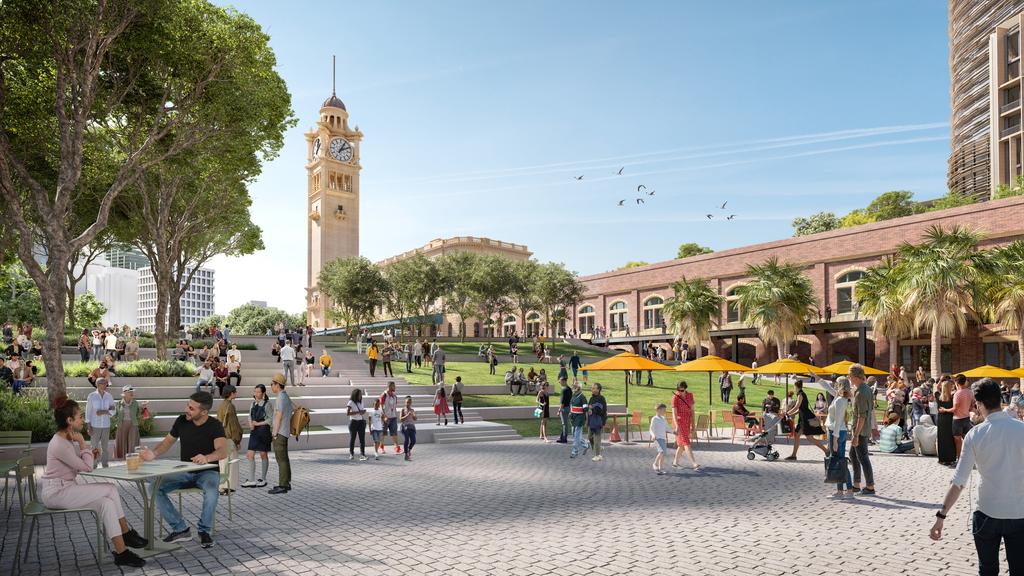
An artist’s impression of Central Square.
The new hybrid timber office tower will have about 75,000sq m of gross floor area with retail amenities and YHA accommodation at its base, along with public spaces around Central Station.
It is using a striking mass timber design with a glass and steel exoskeleton that has an electricity-generating facade system with self-shade capabilities to reduce direct heat gain.
The design aims to halve embodied carbon in the building, compared to a conventional construction project, and to also halve the operational energy consumption against standard buildings.
The tower will be powered by fully renewable energy from day one of operation and will also target 6-star NABERS Energy and 6-star Green Star design ratings.
Big capital is still chasing the best office buildings across the country despite concerns about how technology companies will use offices.
Atlassian has adopted a work-from-anywhere policy, which allows staff to relocate to another city or country where the company has an established presence.
Investors are now accepting that work practices have changed with the adoption of hybrid models, but large companies are keeping their headquarters as they are critical to company culture and collaboration. While a deal is yet to be finalised and the developer declined to comment, Dexus has close ties with big funds.
It has an existing venture with NPS on a portfolio of Australian industrial properties. NPS also likes offices and this year joined with Allianz Real Estate to pay about $633m for a half stake in Sydney’s Darling Quarter complex.
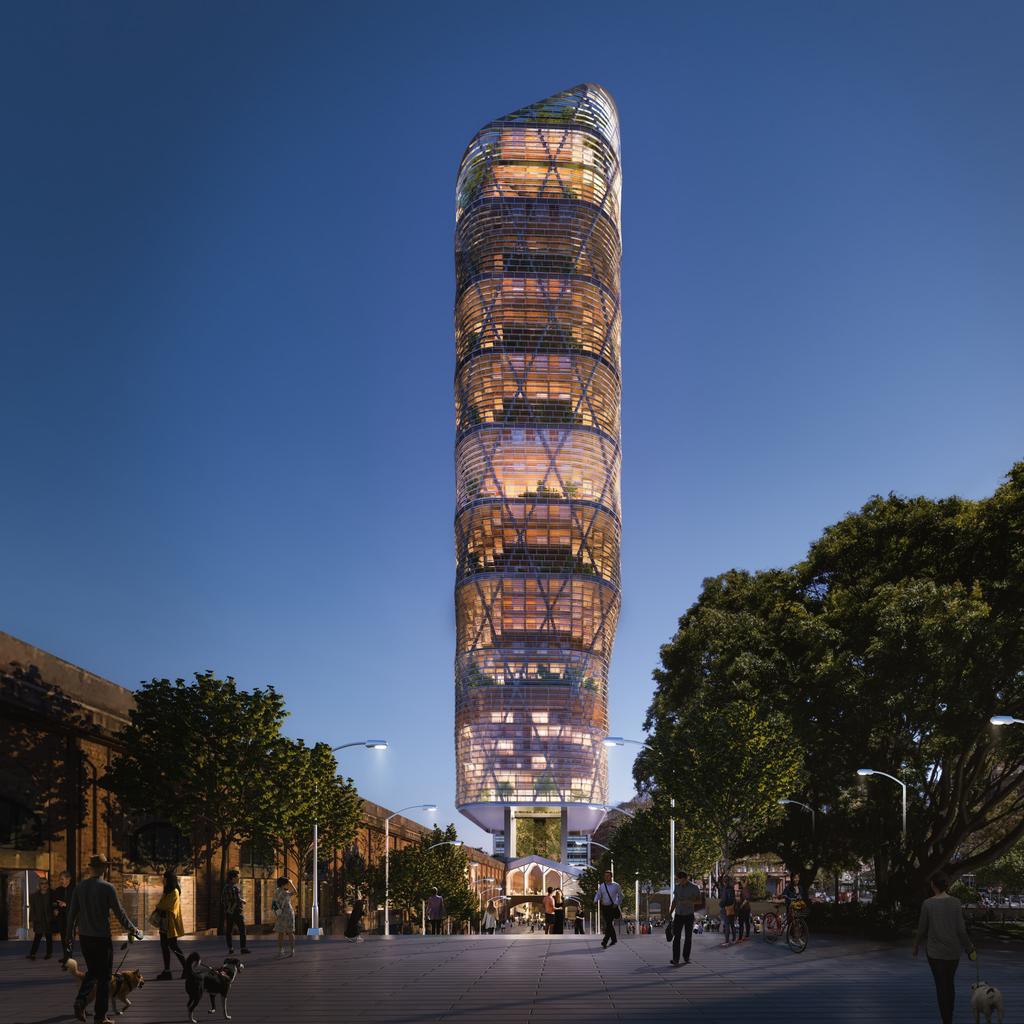
Construction is underway on global software giant Atlassian’s 39-storey headquarters in Sydney.
Dexus also had an industrial tie up with GIC but the fund last year sold its 49 per cent stake in the $4bn trust. GIC and Dexus in 2020 bought a 50 per cent stake in Rialto Tower in Melbourne for $644m.
The interest in the Atlassian tower could trade for around the 4 per cent yield mark due to its unique nature and scale.
Big office sales had appeared to be rattled by rising bond rates and concerns about the future of office markets. But new buildings are coming up for sale and technology tenants are being chased by developers and investors.
Just last month, Charter Hall’s Prime Office Fund sold a half interest in 555 Collins St to Singapore’s sovereign wealth fund GIC, with the deal on the under-construction $800m Amazon building setting fresh benchmarks for Melbourne.
In the long term, both corporate Australia and government are pushing ahead with large office projects in the belief workers will return once they are assured risks are low and that productivity is highest in offices.
The tech precinct at Central is developing rapidly, with Dexus and Frasers also chasing tenants for the next leg of the multibillion-dollar technology area.
The pair are planning the $3bn Central Place Sydney complex comprising two tall towers, and a 10-storey connecting building, with the property already garnering strong interest from companies in the sector.
Along with life sciences, technology tenants have become among the most sought after for offices, with developers keen to bring them into their latest buildings.
That new complex sits beside the planned Atlassian headquarters, and another $1bn building with offices and a hotel to come from developer Toga. It went on exhibition this week and could house 3300 long-term jobs once opened.
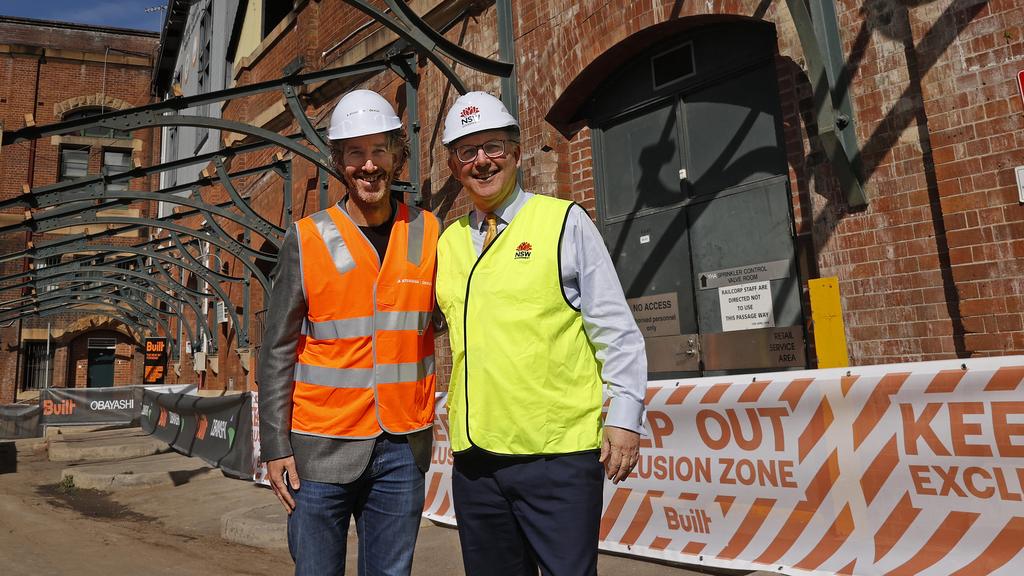
Atlassian co-founder Scott Farquhar, left, and NSW Enterprise Minister Alister Henskens at the construction site, Atlassian Central, which will anchor the Tech Central precinct. Picture: NCA NewsWire / Dylan Coker
Toga managing director Allan Vidor is bullish about the 45-storey project. “TOGA Central will act as an iconic visual marker for Tech Central and the southern CBD,” he said.
“Its design celebrates and secures the heritage of the former Parcels Post Building and will enhance the vitality and vibrancy of the area with a mix of uses including tech focused office space, hotel, wellness gym and pool and a food and beverage offering that will become the social heart of the precinct,” he said.
Pulling off these precinct sized plans won’t be easy. And the larger Central is even more complicated. But there has already been almost a decade of planning go into the 15 new buildings that are to be built above the rail lines.
Committee for Sydney CEO Gabriel Metcalf is backing the overhaul. “If you believe, as we do, that Sydney’s growth should be concentrated around public transport, then Central Station is one of the best places to go big,” he said.
“This is absolutely a location where it makes sense to develop at a large scale.”
Mr Metcalf said the “real test” was whether they could resolve the public realm issues, with level changes and lots of passenger movements.
“Over-station developments are notoriously tricky, and places like the Hudson Yards in New York have achieved only mixed success,” Mr Metcalf said.
“For all of those reasons, this is going to be one of the most closely watched projects in Sydney: an incredible opportunity, but also one that will be quite a challenge.”

